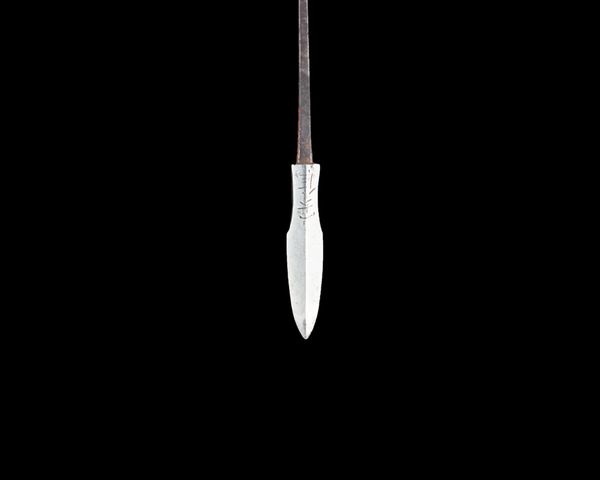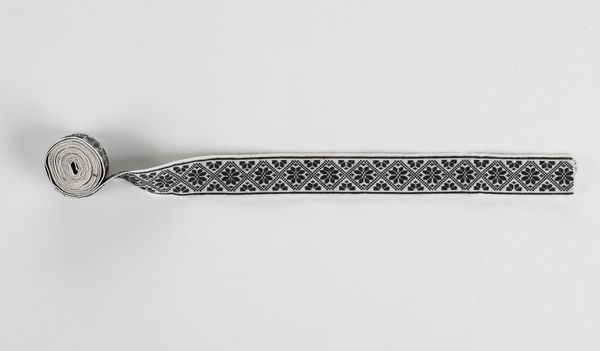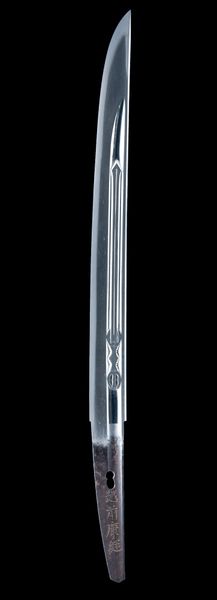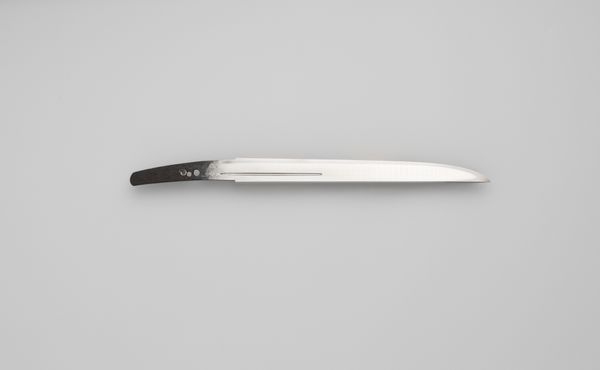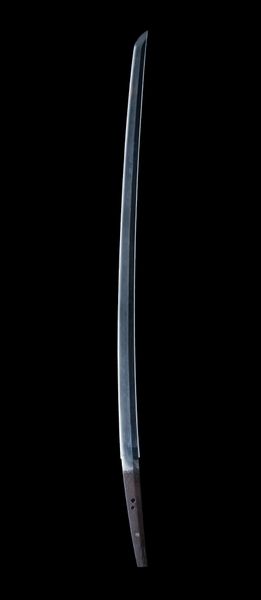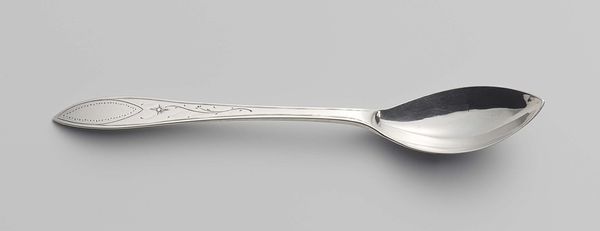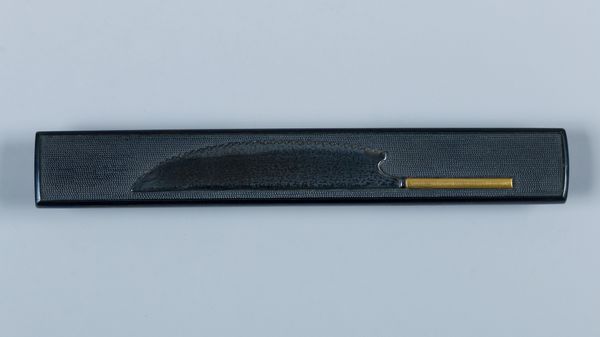
Blade and Mounting for a Dagger (<i>Tantō</i>) 1870 - 1900
0:00
0:00
carving, metal, sculpture, engraving
#
carving
#
metal
#
asian-art
#
japan
#
sculptural image
#
form
#
sculpture
#
line
#
armor
#
decorative-art
#
engraving
#
interesting composition
#
statue
Dimensions: L. 16 1/8 in. (40.9 cm); L. of blade 14 7/16 in. (36.7 cm); L. of cutting edge 10 1/2 in. (26.7 cm); L. of knife (<i>kozuka</i>) 7 1/4 in. (18.4 cm)
Copyright: Public Domain
Curator: This is a blade and mounting for a dagger, or Tanto, by Gassan Sadakazu, created between 1870 and 1900. It’s currently held at the Metropolitan Museum of Art. Editor: My first impression is of intense detail and elegant craftsmanship. The serpentine form etched on the blade contrasts beautifully with the weapon’s intended purpose, suggesting something about duality. Curator: Absolutely. Considering its production within the Meiji era, this piece speaks volumes about Japan’s complex relationship with modernization. On one hand, there’s the functional tool reflecting a martial past, while on the other, we have the intricate decorative dragon indicating continued appreciation for traditional artistry. This moment in Japanese history experienced both a rejection and a reassertion of values as Japan tried to find its place within a globalized world. Editor: And if we look closely at how Sadakazu rendered the dragon, we can analyze the process and labor that went into crafting it. It wasn’t simply stamping an image on metal, it was hand carved. The level of skill required demonstrates a specialized industry of metalworkers who had refined their skills over many generations, suggesting that material objects embed histories. Curator: Exactly, and let's consider the dragon itself. What does it mean to engrave that powerful symbol onto the blade of a weapon? Does it imbue the weapon with potency or symbolize the samurai’s personal strength? And how might we interpret this symbolic act from the perspectives of marginalized groups at the time who weren’t able to assert such identity? Editor: We can also examine how these kinds of decorative details shift the function and value of the piece itself. At some point, it transforms from a potentially utilitarian weapon into an art object or a collector's item—a luxury good divorced from everyday survival. That transition impacts how we perceive not just the object, but also the cultures from which it comes. Curator: I agree. By positioning this blade within both its social and historical context and examining the symbols of identity it deploys, we expose many questions about gender, class, and political power in Meiji-era Japan. Editor: Understanding the object as both material artifact and the site of skilled work broadens that view further to ask important questions about the conditions of labor and consumption inherent in luxury art objects. Curator: Examining an artwork through both lenses—historical and material—is invaluable. It reveals complex systems of meaning that may not otherwise be apparent. Editor: Indeed. Every artifact contains layers of information about how and why it came into being, allowing us to better comprehend complex global issues.
Comments
No comments
Be the first to comment and join the conversation on the ultimate creative platform.

